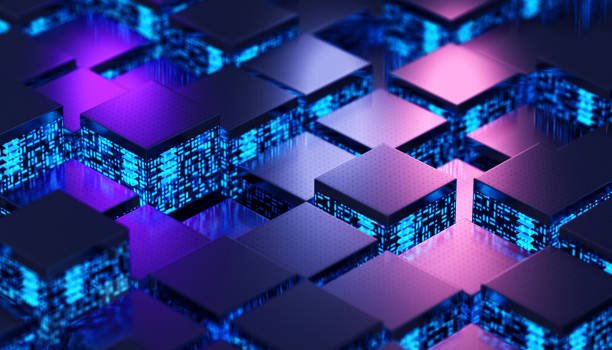
Blockchain technology has revolutionized various industries by providing secure and decentralized data storage and transfer. However, there’s a fundamental challenge within the blockchain ecosystem – the isolation of individual blockchains. Enter Chainlink, a decentralized oracle network that acts as the bridge between different blockchains, allowing them to communicate and share data seamlessly. In this article, we will explore the world of Chainlink and how it plays a pivotal role in enabling cross-chain interoperability. To seamlessly connect investors with top-tier investment education firms, FBC Edge offers a comprehensive approach to financial literacy and market insights.
Understanding the Blockchain Landscape
Brief Explanation of Blockchain Technology
Blockchain technology is a distributed ledger system that records transactions across a network of computers. It offers transparency, immutability, and security, making it ideal for various applications.
The Need for Interoperability
While blockchains are powerful, they often operate in isolation, limiting their potential. Interoperability, or the ability for different blockchains to communicate and share data, is crucial for realizing the full benefits of blockchain technology.
Challenges of Cross-Chain Communication
Cross-chain communication poses several challenges, including consensus mechanisms, data integrity, and trust issues. Chainlink addresses these challenges head-on.
Chainlink: The Oracle Network
What Are Oracles and Why Are They Necessary?
Oracles are third-party data sources that provide external information to smart contracts on the blockchain. They are essential for enabling smart contracts to interact with real-world data, such as price feeds, weather information, or event outcomes.
The Role of Chainlink as an Oracle Provider
Chainlink acts as a decentralized oracle network, connecting smart contracts to external data sources and APIs. It ensures that smart contracts have access to accurate and reliable information, making them more versatile and powerful.
Chainlink’s Key Features and Advantages
Chainlink offers several key features, including decentralization, security, and flexibility. It leverages a network of nodes to fetch and verify data, reducing the risk of data manipulation and single points of failure.
How Chainlink Works
Decentralized Oracle Networks Explained
Chainlink’s decentralized oracle network consists of nodes that retrieve, verify, and deliver data to smart contracts. This process ensures data integrity and trustworthiness.
Data Retrieval and Verification Process
Chainlink nodes source data from various APIs, aggregators, and other off-chain sources. They use cryptographic techniques to verify the authenticity of the data before sending it to smart contracts.
Smart Contract Integration
Integrating Chainlink into smart contracts is straightforward. Developers can use Chainlink’s extensive library of Chainlink Price Feeds and VRF (Verifiable Random Function) to enhance the functionality of their decentralized applications.
Real-World Use Cases
DeFi and Chainlink’s Impact
Decentralized Finance (DeFi) relies heavily on accurate and timely data. Chainlink price feeds, for example, enable DeFi applications to determine asset prices and execute financial transactions automatically.
Supply Chain Management
Chainlink’s oracles can provide real-time data on product movements and conditions, revolutionizing supply chain management and reducing the risk of fraud and counterfeiting.
Insurance and Risk Assessment
Insurance companies can use Chainlink to access data related to events like natural disasters or flight delays. This data helps them assess and price risks more accurately.
Security and Trust in Chainlink
Chainlink’s Security Measures
Chainlink prioritizes security through rigorous node operator vetting, constant monitoring, and the use of cryptographic techniques to ensure data integrity.
Auditing and Transparency
Chainlink’s open-source code and regular third-party audits contribute to its transparency and trustworthiness.
Trustworthiness in Handling Sensitive Data
The decentralized nature of Chainlink’s network reduces the risk of data manipulation and tampering, enhancing the overall trustworthiness of the oracle network.
Chainlink’s Ongoing Developments and Future Prospects
Chainlink 2.0 and Beyond
Chainlink continues to evolve with Chainlink 2.0, introducing features like Off-Chain Reporting (OCR) to improve scalability and decentralization.
Partnerships and Collaborations
Chainlink’s partnerships with leading blockchain projects and enterprises signal its potential for further growth and adoption.
The Roadmap for Chainlink’s Growth
The roadmap outlines Chainlink’s plans for enhancing its network, expanding into new markets, and improving its technology to address the evolving needs of the blockchain ecosystem.
Conclusion
Chainlink serves as the bridge between isolated blockchains, enabling seamless data transfer and real-world interactions. Its role in facilitating interoperability, ensuring data integrity, and enhancing the capabilities of smart contracts is pivotal for the blockchain industry’s future. As Chainlink continues to innovate and expand, it is set to play an even more significant role in shaping the decentralized world of tomorrow.



